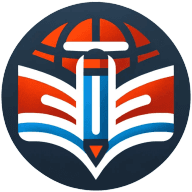4 Unconventional Teaching Techniques That Consistently Produce Strong Results
Modern educators are finding success with teaching methods that challenge traditional classroom approaches. This article explores four proven techniques that consistently yield strong student outcomes, drawing on insights from experienced educators and learning specialists. Discover how structured learning tracks, verbalized thinking processes, personalized learning paths, and real-world connections can transform educational effectiveness.
Structured Learning Tracks Build Student Relationships
My unconventional teaching technique involves implementing structured learning tracks where the same teacher guides the same group of students through a series of ten connected sessions. This approach was developed after carefully studying research on online learning environments that showed stronger relationships lead to better outcomes. By creating this consistency in the learning experience, we've seen significantly improved student engagement and knowledge retention compared to traditional one-off sessions. The students develop a sense of community and accountability that simply wasn't possible in our previous teaching model.

Students Narrate Thinking to Enhance Problem-Solving
One unconventional technique we've developed is having students "narrate their thinking" while solving problems. Instead of quietly working through steps, tutors encourage students to explain out loud what they're doing and why. It's a simple idea, but it completely changes how students approach problem-solving. When they verbalize their process, it becomes easier to spot gaps in understanding, clarify reasoning, and correct misconceptions in real time.
We discovered this approach after noticing that students who asked more questions or explained their answers tended to learn faster and retain information better. By turning that observation into a structured part of every session, we found that students became more confident, independent thinkers. It's now a consistent practice across our tutoring team because it not only improves accuracy and comprehension, but also builds communication skills and self-awareness in learning.

Personalized Pathways Match Cognitive Learning Strengths
I've found remarkable success with personalized learning pathway development, where I create completely different instructional approaches based on a student's cognitive strengths. With visual learners, I incorporate color-coding and visual analogies, while for quantitative learners, I focus on calculations and real-world applications through equations. This technique emerged organically from working with two IB Chemistry students who were struggling with the same material but processing information in fundamentally different ways. The results were transformative - both students excelled when the material was presented in alignment with their natural learning preferences rather than through a one-size-fits-all approach.

Connect Lessons to Students' Real-World Experiences
From a student's perspective, today's courses in high schools in English, history or Geometry classes can feel outdated and they can feel disconnected with the material. While teachers are pouring into their lessons, students are checked out. This isn't a lack of effort on their part, it's a lack of connection and context.
From years of practice and conducting research, teachers can increase connections by considering how they frame lessons to meet students where they are at today. For example, incorporating culturally responsive content like stories from people who reflect their world to draw them in. Instead of generic case studies, lessons draw from students' lived experiences, local industries, and community narratives.
Students are very informed today with access to so much information, trends and pop culture so co-create your learning outcomes to incorporate student voice and choice. How? By selecting project topics that get them involved by aligning their personal interests and cultural values such as framing budgeting as a tool for breaking generational cycles rather than just managing money. Or in an English or Spanish class, they might analyze social justice campaigns or bilingual advertising that reflect the students' neighborhoods and cultural voices.


